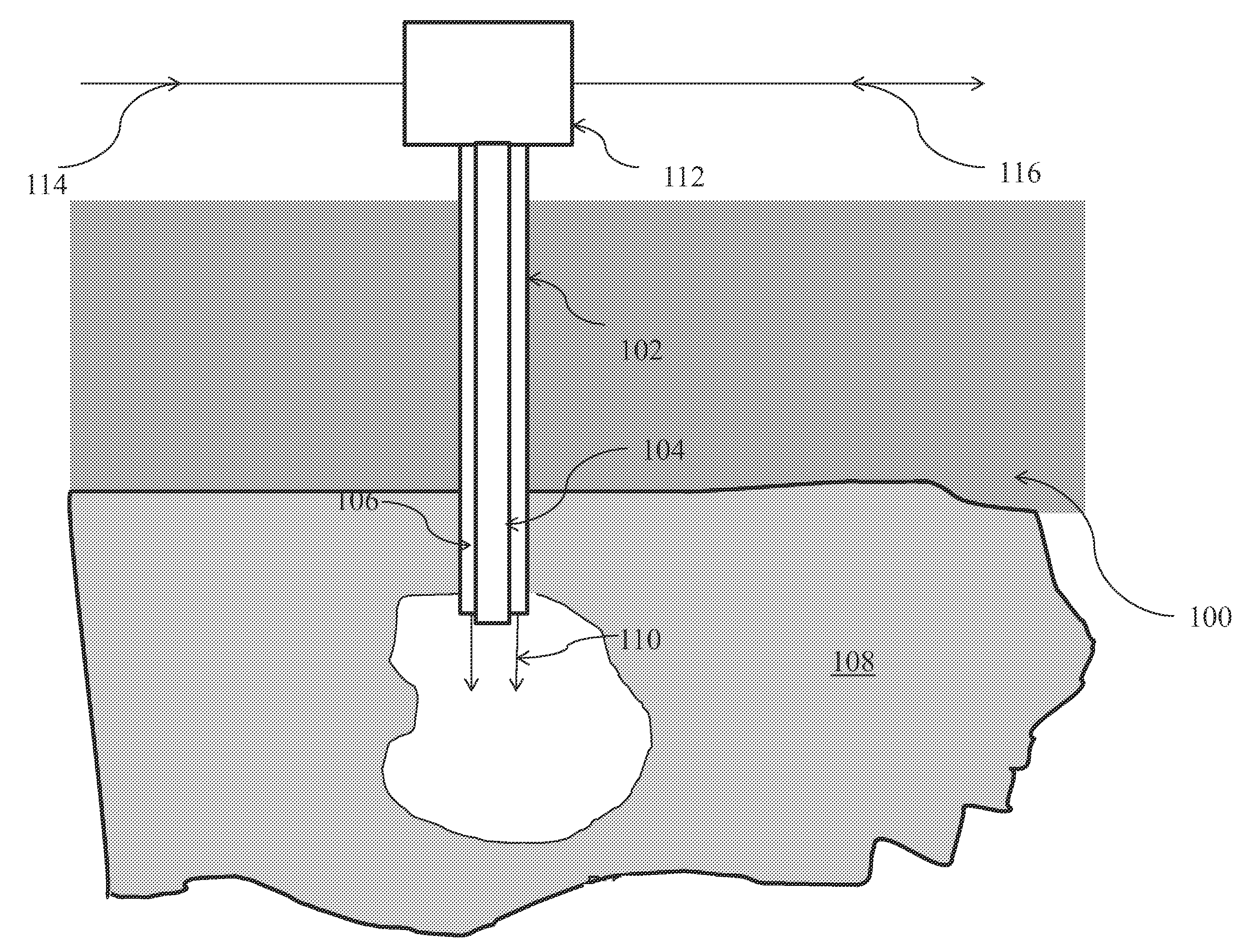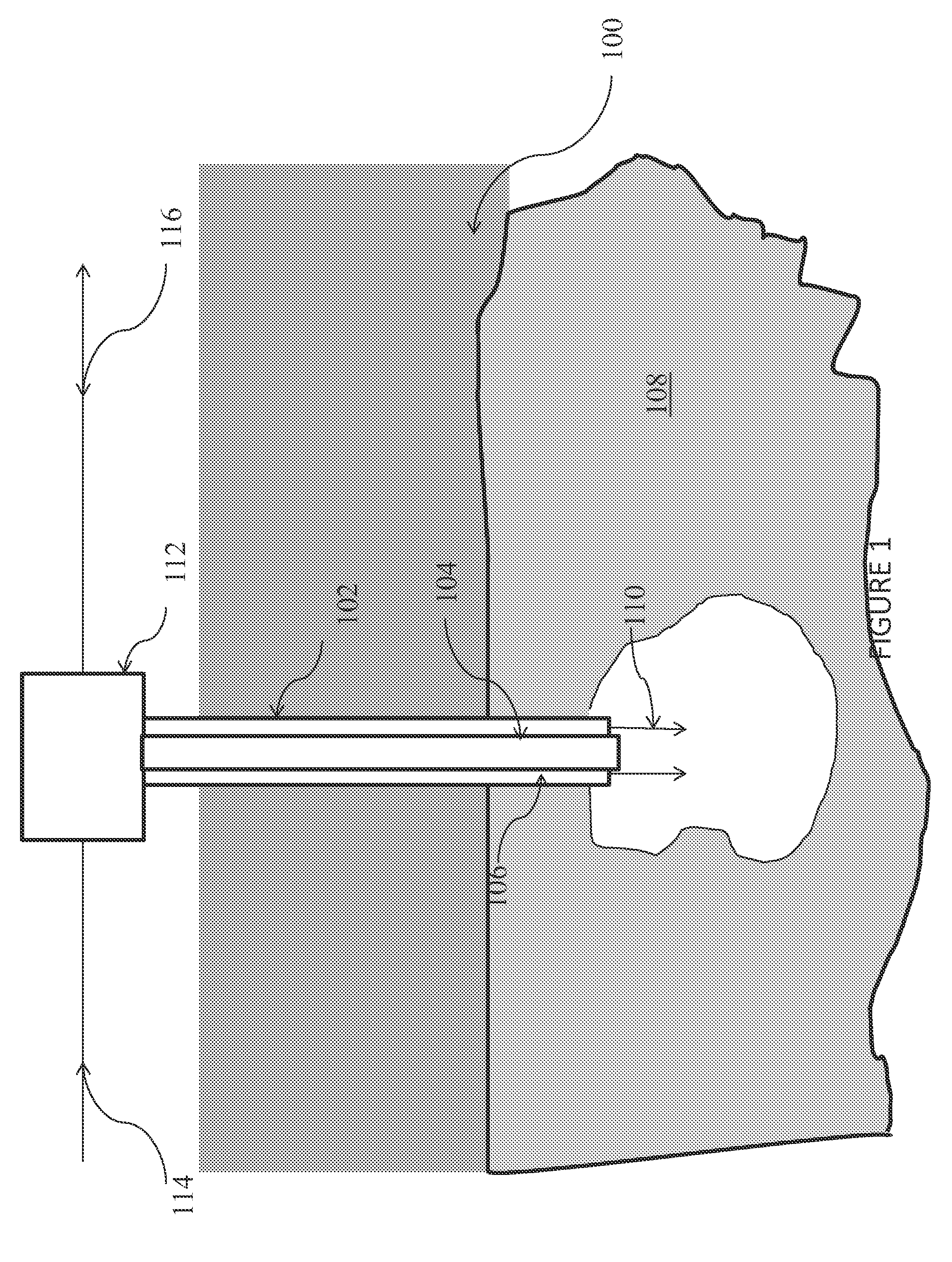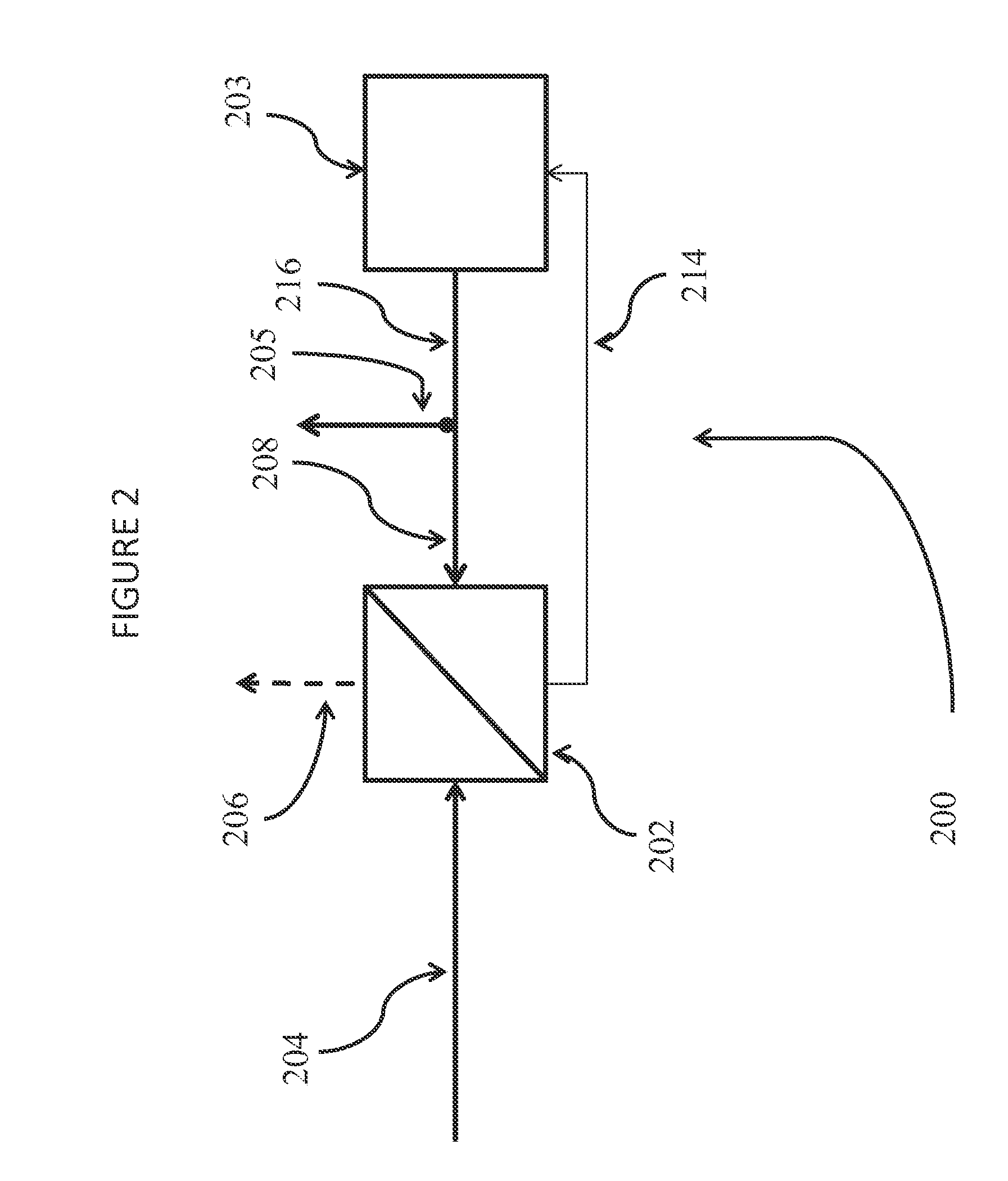Brine mining process
a mining process and brine technology, applied in the field of brine mining process, can solve the problems of requiring the use of expensive pumps and other equipment, and achieve the effect of reducing reliance on natural resources and less expenditure in utility costs
- Summary
- Abstract
- Description
- Claims
- Application Information
AI Technical Summary
Benefits of technology
Problems solved by technology
Method used
Image
Examples
example 1
[0107]351 t / h of a feed stream comprising sea water having a salt concentration of 3.5% and 117 t / h hour of a draw solution comprising 25% NaCl are provided to a single forward osmosis unit comprising 976 forward osmosis membranes (3.2 m2 area, type FO_CTA, product 4040MS, commercially available from HTI™, Albany Oreg.) which exhibit a flux rate of 16 l / (h*m2)
[0108]The outgoing feed stream 206 contains 4.1 NaCl, at a flow rate of 301 t / h, while the outgoing draw stream 214 contains 17.5 NaCl at a flow rate of 167 t / h. This outgoing draw stream is then reintroduced into the brine mine to reconcentrate to 25% NaCl, obviating the need to reconcentrate the same with purchased salt or evaporation, thereby providing cost savings.
[0109]Additional flow that cannot be accommodated by the existing mine structure is stored, used in other processes, or appropriately disposed of. Or, additional bore holes are provided to accommodate the flow. In this case, about 50 t / h of fresh water is drawn fr...
example 2
[0110]A feed stream comprising 3.5 wt. % NaCl and a draw stream comprising 25 wt. % NaCl are fed serially, and in counter current fashion, to five forward osmosis units comprising a total of 1438 forward osmosis membranes (type FO_CTA, product 4040MS, HTI™, Albany, Oreg.). The flow rates and salt concentration of the feed and draw streams at each forward osmosis unit, as well as the number of forward osmosis membranes used at each forward osmosis unit, are shown in Table 1, below, wherein the forward osmosis units are identified by reference to FIG. 3. The flux rates of the membranes in this example decreased from 16 l / (h*m2) in unit 302 to 14 l / (h*m2) in unit 312 to 12 l / (h*m2) in unit 322 to 10 l / (h*m2) in unit 332 to 8 l / (h*m2) in unit 342, caused by the decreasing salt concentration difference on the two sides of the membrane. The outgoing draw stream is introduced into a brine mine for reconcentration.
TABLE 1DrawDrawFeedFeedDrawDrawStreamstreamFeedFeedStreamStreamStreamStreamfl...
example 3
[0112]A feed stream comprising 3.5 wt. % NaCl is fed in parallel, and a draw stream comprising 25 wt. % NaCl is fed serially, to five forward osmosis units comprising a total of 1415 forward osmosis membranes (type FO_CTA, product 4040MS, HTI™, Albany Oreg.). The flow rates and salt concentration of the feed and draw streams at each forward osmosis unit, as well as the number of forward osmosis membranes used at each forward osmosis unit, are shown in Table 2, below, wherein the forward osmosis units are identified by reference to FIG. 4. The flux rates of the membranes in this example decreased from 17 l / (h*m2) in unit 402 to 15 l / (h*m2) in unit 412 to 12 l / (h*m2) in unit 422 to 10 l / (h*m2) in unit 432 to 8 l / (h*m2) in unit 442, caused by the decreasing salt concentration difference on the two sides of the membrane. The outgoing draw stream is introduced into a brine mine for reconcentration.
TABLE 2DrawDrawFeedDrawDrawStreamStreamFeedFeedStreamStreamStreamflowNaClStreamStreamflowFe...
PUM
| Property | Measurement | Unit |
|---|---|---|
| Flow rate | aaaaa | aaaaa |
Abstract
Description
Claims
Application Information
 Login to View More
Login to View More - R&D
- Intellectual Property
- Life Sciences
- Materials
- Tech Scout
- Unparalleled Data Quality
- Higher Quality Content
- 60% Fewer Hallucinations
Browse by: Latest US Patents, China's latest patents, Technical Efficacy Thesaurus, Application Domain, Technology Topic, Popular Technical Reports.
© 2025 PatSnap. All rights reserved.Legal|Privacy policy|Modern Slavery Act Transparency Statement|Sitemap|About US| Contact US: help@patsnap.com



